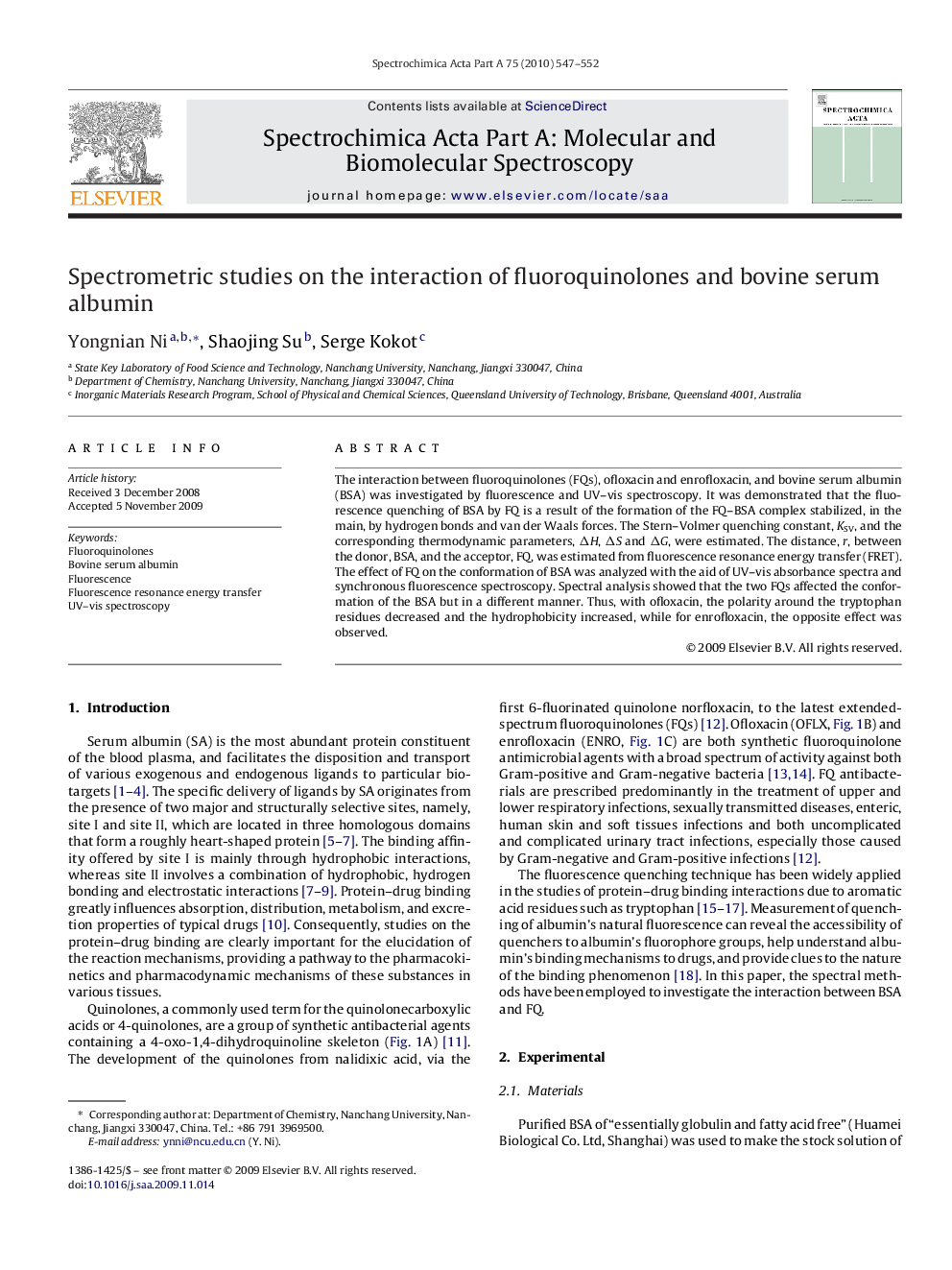| Article ID | Journal | Published Year | Pages | File Type |
|---|---|---|---|---|
| 1237181 | Spectrochimica Acta Part A: Molecular and Biomolecular Spectroscopy | 2010 | 6 Pages |
The interaction between fluoroquinolones (FQs), ofloxacin and enrofloxacin, and bovine serum albumin (BSA) was investigated by fluorescence and UV–vis spectroscopy. It was demonstrated that the fluorescence quenching of BSA by FQ is a result of the formation of the FQ–BSA complex stabilized, in the main, by hydrogen bonds and van der Waals forces. The Stern–Volmer quenching constant, KSV, and the corresponding thermodynamic parameters, ΔH, ΔS and ΔG, were estimated. The distance, r, between the donor, BSA, and the acceptor, FQ, was estimated from fluorescence resonance energy transfer (FRET). The effect of FQ on the conformation of BSA was analyzed with the aid of UV–vis absorbance spectra and synchronous fluorescence spectroscopy. Spectral analysis showed that the two FQs affected the conformation of the BSA but in a different manner. Thus, with ofloxacin, the polarity around the tryptophan residues decreased and the hydrophobicity increased, while for enrofloxacin, the opposite effect was observed.
